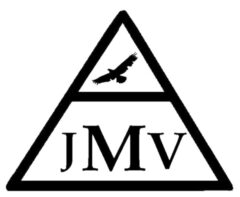Karvi Agarwal, RK Verma, DP Singh, Sonal Jindal
Cite
Agarwal K, Verma RK, Singh DP, Jindal S. Biofilm producer multi drug resistance alert bugs in ventilator associated pneumonia patients. Threat to antibiotic era and future concern J Mech Vent 2023; 4(3):101-106.
Abstract
Background
Emerging threat of drug resistance among Bacteria causing ventilator-associated pneumonia (VAP) has resulted in higher hospital costs, longer hospital stays, and increased hospital mortality. Biofilms in the endotracheal tube of ventilated patients act as protective shield from host immunity for bacterial growth and emerge them as multidrug resistant.
Aim
To know the prevalence of various bacterial isolates causing VAP, ability to form biofilm and their antibiotic susceptibility pattern.
Material & Methods
This study was conducted in the department of Microbiology in collaboration with the Respiratory Medicine department for a period of one year (November 2018-19). Endotracheal aspirate (ETA) along with 1 cm tube tip from clinically confirmed VAP patients were processed as per the standard microbiological procedure for the detection of bacterial biofilm formation and their antimicrobial resistance pattern. Statistical Analysis: Data was statistically evaluated using SPSS-PC-20 version. ‘P’ value less than 0.05, considered statistically significant.
Results
72 patients with CPIS score > 6 were clinically confirmed as VAP. Various Bacteria isolated were Klebsiella pneumoniae in 52 (53%), Escherichia coli 16 (16.3%), Pseudomonas aeruginosa 14 (14.2%), Acinetobacter spp. 8 (8.1%), Proteus mirabilis 6 (6.1%) and Pseudomonas luteola 2 (2%). All bacterial isolates were processed for their ability to form biofilm, 86 (87.7%) were biofilm producers (BFP) while 12 (12.2%) were biofilm non-producers (BFNP).
Conclusion
Bacterial etiology, prolonged intubation, biofilm formation, and drug resistance have ramification on outcome of VAP.
Keywords
Ventilator associated pneumonia (VAP), CPIS score, Biofilm formation, Tissue culture plate method (TCP), Antimicrobial drug resistance (AMR)
References
| 1. Danin PE, Pharm EG, Legrand P, et al. Description and microbiology of endotracheal tube biofilm in mechanically ventilated subjects. Respir Care 2015; 60(1):21-29. https://doi.org/10.4187/respcare.02722 PMid:25371399 | |||
| 2. Pugin J, Auckenthaler R, Mili N, et al. Diagnosis of ventilator-associated pneumonia by bacteriologic analysis of bronchoscopic and nonbronchoscopic “blind” bronchoalveolar lavage fluid. Am Rev Respir Dis 1991; 143(5):1121-1129. https://doi.org/10.1164/ajrccm/143.5_Pt_1.1121 PMid:2024824 | |||
| 3. Sastry AS, RD. Essentials of hospital infection control. 1st ed. Jaypee publishers; 2019. Major Healthcare associated infection types. | |||
| 4. Christensen GD, Simpson WA, Younger JA, et al. Adherence of coagulase negative Staphylococci to plastic tissue cultures: a quantitative model for the adherence of Staphylococci to medical devices. J Clin Microbiol 1995; 22:996-1006. https://doi.org/10.1128/jcm.22.6.996-1006.1985 PMid:3905855 PMCid:PMC271866 | |||
| 5. Stepanovic S, Vukovi D, Hola V, et al. Quantification of biofilm in microtiter plates: overview of testing conditions and practical recommendations for assessment of biofilm production by Staphylococci. APMIS 2007; 115:891-899. https://doi.org/10.1111/j.1600-0463.2007.apm_630.x PMid:17696944 | |||
| 6. Gupta A, Agrawal A, Mehrotra S, et al. Incidence, risk stratification, antibiogram of pathogens isolated and clinical outcome of ventilator associated pneumonia. Indian J Crit Care Med 2011; 15(2):96-101. https://doi.org/10.4103/0972-5229.83015 PMid:21814373 PMCid:PMC3145311 | |||
| 7. Thakuria B, Singh P, Agarwal S, et al. Profile of infective microorganisms causing ventilator-associated pneumonia: A clinical study from resource limited intensive care unit. J Anaethisol Clin Pharmacol 2013; 29:361-366. https://doi.org/10.4103/0970-9185.117111 PMid:24106362 PMCid:PMC3788236 | |||
| 8. Ranjan N, Chaudhary U, Chaudhry D, et al. Ventilator-associated pneumonia in a tertiary care intensive care unit: Analysis of incidence, risk factors and mortality. Indian J Crit Care Med 2014; 18(4):200-204. https://doi.org/10.4103/0972-5229.130570 PMid:24872648 PMCid:PMC4033852 | |||
| 9. Charles MP, Easow JM, Joseph NM, et al. Aetiological agents of ventilator-associated pneumonia and its resistance pattern – a threat for treatment. Australas Med J 2013; 6(9):430-434. https://doi.org/10.4066/AMJ.2013.1710 PMid:24133535 PMCid:PMC3794413 | |||
| 10. Kant R, Dua R, Beg MA, et al. Incidence, microbiological profile of early outcomes of ventilator associated pneumonia in elderly in a tertiary care hospital in India. Afr J Med Health Sci 2015; 14:66-69. https://doi.org/10.4103/2384-5589.153397 | |||
| 11. Patil VC. Incidence, bacteriology, and clinical outcome of ventilator-associated pneumonia at tertiary care hospital. J Nat Sc Biol Med 2017; 8:46-55. https://doi.org/10.4103/0976-9668.198360 PMid:28250674 PMCid:PMC5320823 | |||
| 12. Dey A, Bairy I. Incidence of multidrug-resistant organisms causing ventilator-associated pneumonia in a tertiary care hospital: A nine months’ prospective study. Ann Thorac Med 2007; 2(2):52-57. https://doi.org/10.4103/1817-1737.32230 PMid:19727346 PMCid:PMC2732076 | |||
| 13. Goel V, Hogade SA, Karadesai SG. Ventilator associated pneumonia in a medical care intensive care unit: Microbial etiology, susceptibility patterns of isolated microorganisms and outcome. Indian J Anasth 2012; 56:558-562. https://doi.org/10.4103/0019-5049.104575 PMid:23325941 PMCid:PMC3546243 | |||
| 14. Hira HS, Zachariah S, Kumar R. Evaluation of ventilator-associated lower respiratory tract infection and tracheobronchial aspiration of gastrointestinal contents. J Assoc Physicians India 2002; 50:1381-1385. | |||
| 15. Alqurashi AM. Antibiotic susceptibility patterns of different bacteria isolated from patients with ventilator associated pneumonia (VAP). J Fam Community Med 2005; 12:139-144. https://doi.org/10.4103/2230-8229.97579 | |||
| 16. Chidambaram N, Rajan R, Sasikala G, et al. A Study on bacterial etiology of ventilator associated pneumonia and its antimicrobial pattern. Ijcmr 2018; 5(12):L5-L8. https://doi.org/10.21276/ijcmr.2018.5.12.8 | |||
| 17. Hassan A, Usman J, Kaleem F, et al. Evaluation of different detection methods of biofilm formation in the clinical isolates. Braz J Infect Dis 2011; 15(4):305-311. https://doi.org/10.1016/S1413-8670(11)70197-0 PMid:21860999 | |||
| 18. Mathur T, Singhal S, Khan S, et al. Detection of biofilm formation among the clinical isolates of Staphylococci: an evaluation of three different screening methods. Indian J Med Microbiol 2006; 24(1):25-29. https://doi.org/10.1016/S0255-0857(21)02466-X PMid:16505551 | |||
| 19.Subramanian P, Umadevi S, Kumar S, et al. Determination of correlation between biofilm and extended spectrum β lactamases producers of Enterobacteriaceae. Scho Res J 2012; 2(1):2-6. https://doi.org/10.4103/2249-5975.119797 |
